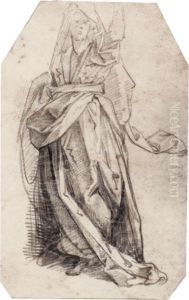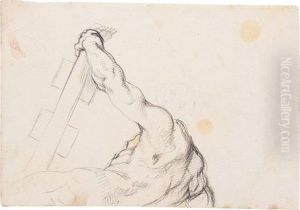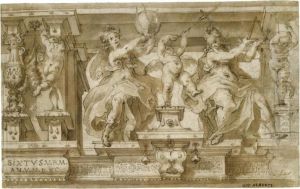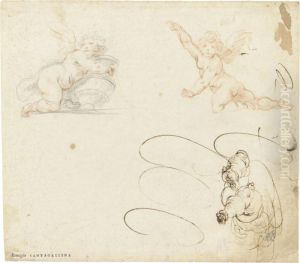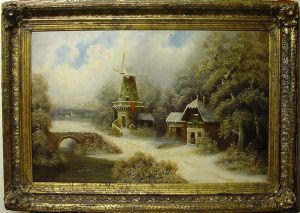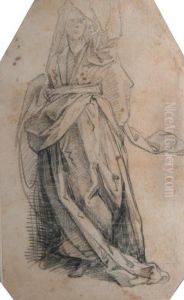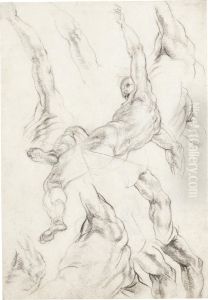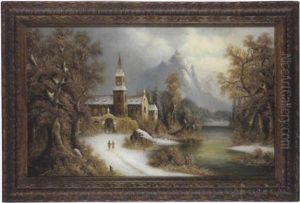Giovanni Alberti Paintings
Giovanni Alberti was an Italian painter of the late-Renaissance period, born in Borgo San Sepolcro, Tuscany in 1558. He was a member of the Alberti family, which included several notable artists of the time, such as his brothers Cherubino and Alessandro, both of whom were also painters. Giovanni's work is less well-documented than that of his brothers, and as such, he remains a more obscure figure in art history.
Alberti's artistic career unfolded during a period of significant transition in European art, as the Late Renaissance gave way to the early Baroque. His work was influenced by the Mannerist style, which was characterized by artificiality, grace, and elegance, departing from the proportional and harmonious ideals of the High Renaissance. Giovanni Alberti's paintings often featured an emphasis on elongated figures and unusual perspectives that were typical of the Mannerist aesthetic.
Not much is known about Alberti's training, but it is presumed he worked closely with his brothers and was exposed to the vibrant artistic community in Rome, where he spent a significant portion of his career. His works include religious subjects, which were common at the time, and he painted for various churches and patrons. Despite the lack of extensive documentation, some of his artwork still survives and can be seen in churches in Rome and its surroundings.
Giovanni Alberti died in 1601, at the age of 43. While his legacy is overshadowed by that of his brothers and other giants of the Renaissance and early Baroque periods, his contributions to the Mannerist movement remain a part of the rich tapestry of Italian art history.
